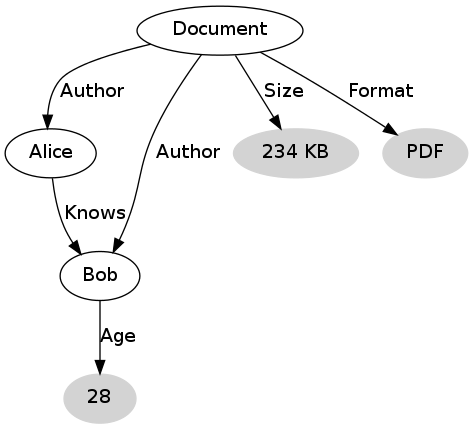RDF is a common language:
- for representing information about resources on the Web
- that allows data to be shared and reused across application, enterprise, and community boundaries
RDF concepts
RDF identifies resources using Web identifiers called Uniform Resource Identifiers, or URIs.
RDF describes resources using simple statements in the form:
subject > predicate > object
These statements are known as RDF triples.
A set of triples is called an RDF model or graph.
RDF triples
The subject is an URI and denotes the resource.
The predicate is an URI:
- it denotes traits or aspects of the resource
- expresses a relationship between the subject and the object
- it is also known as the property of the triple
The object may be either a literal or an URI. It denotes:
- the related resource
- the literal value of the property
Basically, a triple is the formal representation of a simple sentence with a subject, a verb and an object. Here are some examples of triples where the URIs have been replaced with a human-readable words:
| Subject | Predicate | Object |
|---|---|---|
| The sky | has the color | Blue |
| John | has a brother | Jim |
In the first triple, the object (blue) is a literal while in the second one, the object (Jim) is an URI. It means it may be used as the subject of another triple.
When put together and displayed as arrows, several triples may compose a complex graph. In the following example of an RDF graph, the resources (URIs) are represented as white shapes while the values (literals) are represented as grey shapes.

As per the W3C specification, predicates should be URIs. In Componize, predicates are referenced as qualified names instead of URIs because it allows the application to easily relate the predicates to properties from the Alfresco content model.